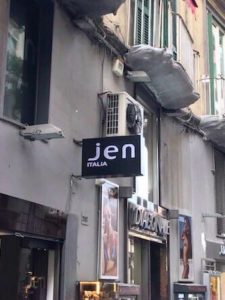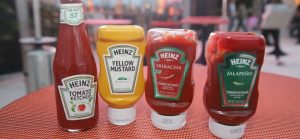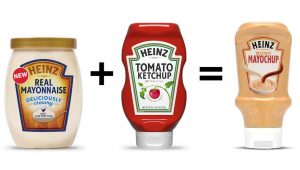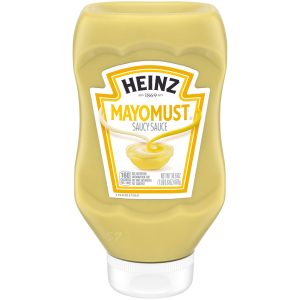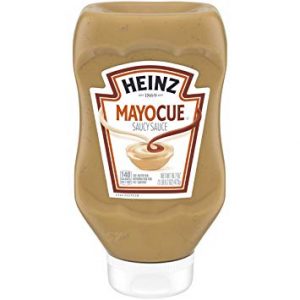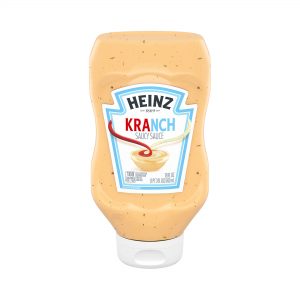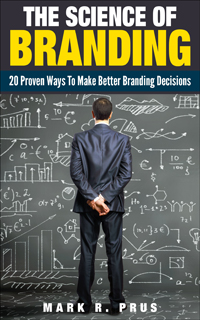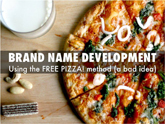“That which we call a rose by any other name would smell as sweet.” William Shakespeare
Have you eaten Patagonian toothfish? Ewww, right? Well, if you have eaten Chilean sea bass you have eaten Patagonian toothfish. An American fish wholesaler changed the name to make it more palatable, even though the toothfish is not related to bass and most of the fish labeled as Chilean sea bass does not come from Chile!
There is a long history of rebranding fish to make it more palatable. Here are a few more examples:
Orange roughy was originally slimehead.
Monkfish was originally goosefish.
Sea urchin (Uni on your favorite sushi restaurant’s menu) was originally whore’s eggs.
Peekytoe crab was originally mud crab.
Fish wholesalers are not the only ones who change names to change perceptions. The drug industry has been doing this for years. Urinary incontinence became “light bladder leakage.” Impotence became erectile disfunction. Changing a name changes the perceptions of the disease.
Do you have something you need to rename? We can help!
XLERATOR®
Quick, how did you pronounce that name?
Here is the logo design on the product…does it help or hurt the pronunciation?
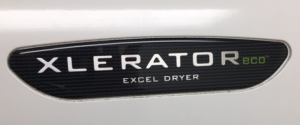
I won’t go into my thoughts on the name itself (i.e., is it a #GoodName or a #BadName?).
But I will make a point about how you can use logo design to encourage proper pronunciation of your name.
The way the name appears on the wall mounted hand dryer is block letters all connected: XLERATOR. If you try to pronounce it you will find the initial X to be difficult, and might end up calling the brand X-lerator. However, I’m almost certain the company wants you to pronounce it as “EXCELERATOR.”
One way to encourage proper pronunciation would be to space the brand name a bit…maybe go with XL ERATOR. Or perhaps you bold the XL and make it look like: XLERATOR. With some simple visual cues, the name becomes easier to pronounce.
I’m not a graphic designer but I’m sure a good one could name hundreds of other ways to encourage proper pronunciation. Developing a name is only one part of branding. Don’t forget the visual aspects of branding!
If You Have To Make A Video Explaining How To Pronounce Your Name, Is That A Good Name Or A Bad Name?
Porsche® announced its newest sports car which is an all-electric vehicle targeting Tesla buyers. The call it Taycan®. No, it’s not pronounced tay-can.
In fact, Porsche was so concerned about mis-pronunciation of the name it made a video about how to pronounce the name!
Tie-con it is!
It is a beautiful car, and I like the story behind the name. It’s not for everyone of course ($150,000+) but Porsche cars have never been mass market items.
According to Porsche, the name Taycan roughly translates from Turkish as “lively young horse” in reference to the historical Porsche crest and the exciting future of a new breed of sports car.
Of course, if you can’t properly pronounce Taycan, you are probably pronouncing Porsche wrong too…fortunately Porsche made a video about that as well:
Another Fail in International Branding
Yes folks, they actually call themselves Jen Italia.
This is a curious name because there is no “j” in the Italian language…it is used only for foreign words. Yet, this Italian footwear store chose a name that references sex organs. Go figure.
I’m guessing that the founders were oblivious to the way the name would be pronounced in English, or they were aware and decided to be controversial. Nevertheless, I count this one as a branding fail.
People who name companies, products or services really need to check out international communication of their names! FYI here is a firm that can help (Shout out to Dagmar Dolatschko!)
When Product Development Yields Portmanteau Names
port·man·teau
/ˌpôrtˈmantō/
noun
A word blending the sounds and combining the meanings of two others, for example motel (from ‘motor’ and ‘hotel’) or brunch (from ‘breakfast’ and ‘lunch’).
Sometimes portmanteau names can be great combinations that help communicate the concept behind the brand. Microsoft is a portmanteau of microcomputer and software. Groupon combines group and coupon. Instagram combines instant (camera) and telegram. These are fantastic combinations that subtly reveal the underlying brand positioning, which aids in the memorability of the brand name.
Sometimes portmanteau names are lazy combinations that just don’t work (see the POOLIFE combination in this post). https://nameflash.com/2018/08/the-perils-of-portmanteau-names/
And sometimes, portmanteau names are simply the result of clever product development ideas.
Heinz (Kraft Heinz Company: NASDAQ: KHC) is product development wizard as they regularly introduce new items to capture the imagination of condiment users. For example, a few years ago they introduced sriracha and jalapeño flavored ketchup. And they called them… sriracha and jalapeño flavored ketchup. Not exactly names that lend themselves to PR pickup.
But recently they launched another combo product…and called it MAYOCHUP.
Classic use of the portmanteau technique: MAYONNAISE + KETCHUP = MAYOCHUP. The internet exploded.
But Heinz did not stop there. Their product development pipeline kicked in other condiment combinations, yielding:
Heinz even reached into the pantry of Kraft to add barbecue sauce and ranch dressing:
Heinz has always had excellent product development ideas, but now they have discovered the portmanteau method of naming to reinforce the 1 + 1 = 2 product positioning behind the combination of condiments.
If Heinz had this formula when they were launching the sriracha flavored ketchup they might have called it SRIRACHUP. Now, unfortunately for Heinz, the name SRIRACHUP has already been trademarked by a competitor…but why not KETCHACHA?
What future combinations can we expect from the Kraft Heinz Company?
Tell Me A Story
Smart marketers know how to tell a story. One of Seth Godin’s early books, All Marketers Are Liars, explains the use of storytelling as a marketing tool. It is proven to work.
If you want to up the degree of difficulty, try cueing a story with your name. It is not an easy thing to do. But a good marketer should be able to use the product name as an entry into a story.
Here is an example of how one of our clients did that.
This client was importing a spice liqueur from Goa, India, to the US, and hired NameFlash to develop a name. The recipe for the liqueur is an old family recipe developed centuries ago in a remote village in central Portugal, and includes sugar from Brazil, spices from Asia, and Portuguese fruit, which are then all steeped in strong spirit until the liqueur matures. The resulting dark amber spirit has a unique taste all of its own – it opens with top notes of cardamom, cinnamon and orange, and you slowly get hints of turmeric, cloves and other spices as the taste lingers on the palate.
This liqueur is more complex than Fireball® (cinnamon whiskey) but given the rapid growth of Fireball® to a multimillion-dollar brand, it might have been tempting to develop a similar brand name. However, in working with the client, we developed a storyline that gave this product a unique home in the liqueur universe.
The diverse ingredients in the liqueur emerged from the global explorations of the Portuguese Empire which included the Spice Islands, Brazil, parts of Africa and Western India. Vasco da Gama, the Portuguese explorer, was the first European to reach India by sea. His initial voyage to India (1497–1499) was the first to link Europe and Asia by an ocean route, thereby establishing a new Spice Route to India’s southwestern coast. This part of India was known as the Malabar Coast, and as trade developed, it became one of the most powerful regions of India.
We recommended that the client name the product Malabar. Malabar is an exotic name that conjures up images of kingdoms ruled by maharajas, and the history of the Malabar Coast is aligned with the development of the recipe for this product. With a strong historical base and powerful imagery, we felt we had a winner. And the client has taken the name and further developed the story around the product on its website. The product has launched and is available in selected states (www.drinkmalabar.com).
This Is How You Do It
It’s that time of year! Baseball Spring Training is here! In honor of this, I’m looking at the fun names in Minor League Baseball. Some of them demonstrate the key principles of name development!
Minor League Baseball team names can be dull and boring. For example, there are some that just reflect the name of the parent Major League Team (e.g., Oklahoma City Dodgers, Syracuse Mets, Springfield Cardinals or Iowa Cubs). Yawn.
Or maybe they use a traditional animal such as the Burlington Bees or the classic Durham Bulls. These are a little more interesting, but not especially engaging.
Some teams are “swinging for the fences” with their names. When you think about what is important in naming your minor league team, you should focus on 3 things. Team names should be fun, relevant to the local population, and quirky enough to be memorable.
Here are some examples of team names that are “hitting it out of the park.”
The Madison, Alabama, Rocket City Trash Pandas – Yes, there is a large NASA facility nearby (that includes Space Camp) in Huntsville so the “Rocket City” moniker is no surprise. The Trash Pandas came from a consumer contest and won the public vote by a large margin. The previous team name was the uninspiring Mobile BayBears. For the record, the other finalists were space-animal combinations: Moon Possums, ThunderSharks, Space Chimps, and Comet Jockeys.

Even though the Trash Pandas won’t start playing until 2020, they broke the three-month sales record for merchandise sold by a rebranded Minor League Baseball team with over $500,000 in merchandise moved in nearly 3,500 online orders.
The El Paso Chihuahuas – When the former Tuscon Padres moved to El Paso in 2013 the team ran a naming contest and fans chose between these finalists: Aardvarks, Buckaroos, Chihuahuas, Desert Gators, and Sun Dogs. While Team Management was initially a little apprehensive about the name, their focus on fun drove sales of Chihuahuas merchandise to record setting levels.

The New Orleans Baby Cakes – According to a team PR release, the Baby Cakes name is “A tribute to the Mardi Gras king cakes where small plastic babies are sought after.” In the 2017 rebranding, the former New Orleans Zephyrs held a name-the-team contest and the finalists were Baby Cakes, Crawfish, King Cakes, Night Owls, Po’boys, Red Eyes, and Tailgators.

Although the Baby Cakes name was initially met with mixed reactions, the team reported increased merchandise sales after the announcement and the rebrand set a record for online merchandise orders. Of note, the team awarded a free lifetime pass to any baby born in the state of Louisiana during 2017 and was entered into a raffle to win a full four-year tuition to a state college in Louisiana upon their 18th birthday in 2035.
In 2019 the Amarillo Sod Poodles begin play – Per the team, Sod Poodles is a “pioneer’s nickname for ‘Prairie Dogs.’” This name emerged victorious in a “Name the Team” contest, triumphing over other selections rooted in Amarillo’s Texas Panhandle location: Boot Scooters, Bronc Busters, Jerky and Long Haulers.

The Jacksonville Jumbo Shrimp – Previous renditions of teams in Jacksonville included the Jacksonville Expos (referencing the parent Montreal Expos) and the Jacksonville Suns. You’ve got to admit that the Jacksonville Jumbo Shrimp is an upgrade, even if it is an oxymoron.

And speaking of oxymoron, the Jacksonville Jumbo Shrimp was an answer on Jeopardy earlier this year!Jacksonville Jumbo Shrimp✔@JaxShrimp

Hey @thereal4smo – we loved your work on @Jeopardy tonight. Can we interest you in to coming to Jacksonville for a ballgame this season? Follow back and message us if you’re interested!
If you want to check out the bible of the weird team names of Minor League Baseball, check out this book: Root for the Home Team: Minor League Baseball’s Most Off-the-Wall Team Names and the Stories Behind Them.
Someday I’d like to work in the “Funnest” brand name category in America–Minor League Baseball Teams!
Can I Buy A Vowel?
In a recent article in The New York Times, John Williams discussed the evolution of our language through the “vowel dropping” trend.
He mentions the use of vowel dropping in naming tech companies, as tech companies like Tumblr and Flickr dropped vowels “…both for distinctiveness and because the altered names made it easier to trademark, claim domain names on the internet and conduct other practical business.”
In my book The Science of Branding, I noted that the human brain has the ability to “fill in” the gaps caused by vowel dropping. For example, read this sentence and you’ll see how distortion of words does not impair communication:
“It deosn’t mttaer in waht oredr all the ltteers in a wrod are. You can stlil raed it wouthit a porbelm bcuseae the huamn mnid wroks by a porecss of ptatern rceigontion. It dtemrines maennig bfoere porecssnig dteails.”
Isn’t tihs amzanig? Your brain can make sense of even the most chaotic situation.
But just because you can, doesn’t mean you should. Dropping vowels is not always a good strategy for name development. While dropping vowels can make acquisition of .com domains easier, it does not guarantee that getting a trademark will be easier. One important reason for avoiding this strategy is it can distort consumer communication.
One of the most important considerations in evaluating a name is the ability of people to remember the name. Test your “day after recall” with some members of the target audience. Make sure they can pronounce and spell it correctly the day after hearing it. If they can’t repeat it and get it right, then they won’t be able to find your product or service on the web. If they can’t properly recall it then they won’t be able to tell a friend about the name in a way that the friend can find it. Net, net, if the name is too difficult to recall properly, then it won’t be a good name (unless of course you have a lot of money to invest in awareness-generating advertising).
Who Needs A Name?
Mastercard has become the latest company to shift to a “no name” approach to branding.
Of course, they aren’t the first to do this (see Nike, Starbucks, Apple, Target, etc.). We are living in an image-driven world (e.g., Instagram) so this trend is not surprising.
A Mastercard spokesperson said: “As the consumer and commerce landscape continues to evolve, the Mastercard Symbol represents Mastercard better than one word ever could, and the flexible modern design will allow it to work seamlessly across the digital landscape.”
One thing that many people forget is the millions (billions?) of dollars invested in the Mastercard name itself. And yes, that Venn diagram logo design is on every single credit card that Mastercard offers. It is no surprise that “…over 80% of people recognized the brand without the name.”
Does this trend mean that professional logo designers are more in demand or professional name developers are doomed? Nope. Mastercard could not have started with a snappy logo and assumed that everyone would get it. They spent years investing in their brand name and now they can reap the benefits. But you can’t just skip to the “image only” logo design. You have to create the meaning first, and that requires a great brand name (and logo!).
A Better Way To Change Your Name (Or Not)
Last year I wrote a “Change Your Name Already” blog post about Overstock.com which described the painful way that Overstock.com was trying to communicate that their name did not fit what they were doing as a business…”we are so much more!” My response was to politely suggest that they call me to help them find a new name that did fit their business model.
Recently MailChimp launched an ad campaign that approached the “our name does not fit our business model” issue from a different angle. In this effort, they celebrate the fact that they have outgrown their name and tell prospective customers that they would like to help them do the same thing.
Brilliant…simply brilliant. Both Overstock.com and MailChimp have outgrown their names, but Overstock.com communicates it in a way that makes the potential customer feel stupid (“you thought we only sold overstock items but you are stupid…we actually do more!”). MailChimp admits they do more than what their name implies and desire to have the same impact on the prospective customer’s business, thereby leaving prospective customers feeling hopeful. Big difference.
So the CEO of Overstock.com should still call me to initiate a name development project…but the CEO of MailChimp can just take a bow!

